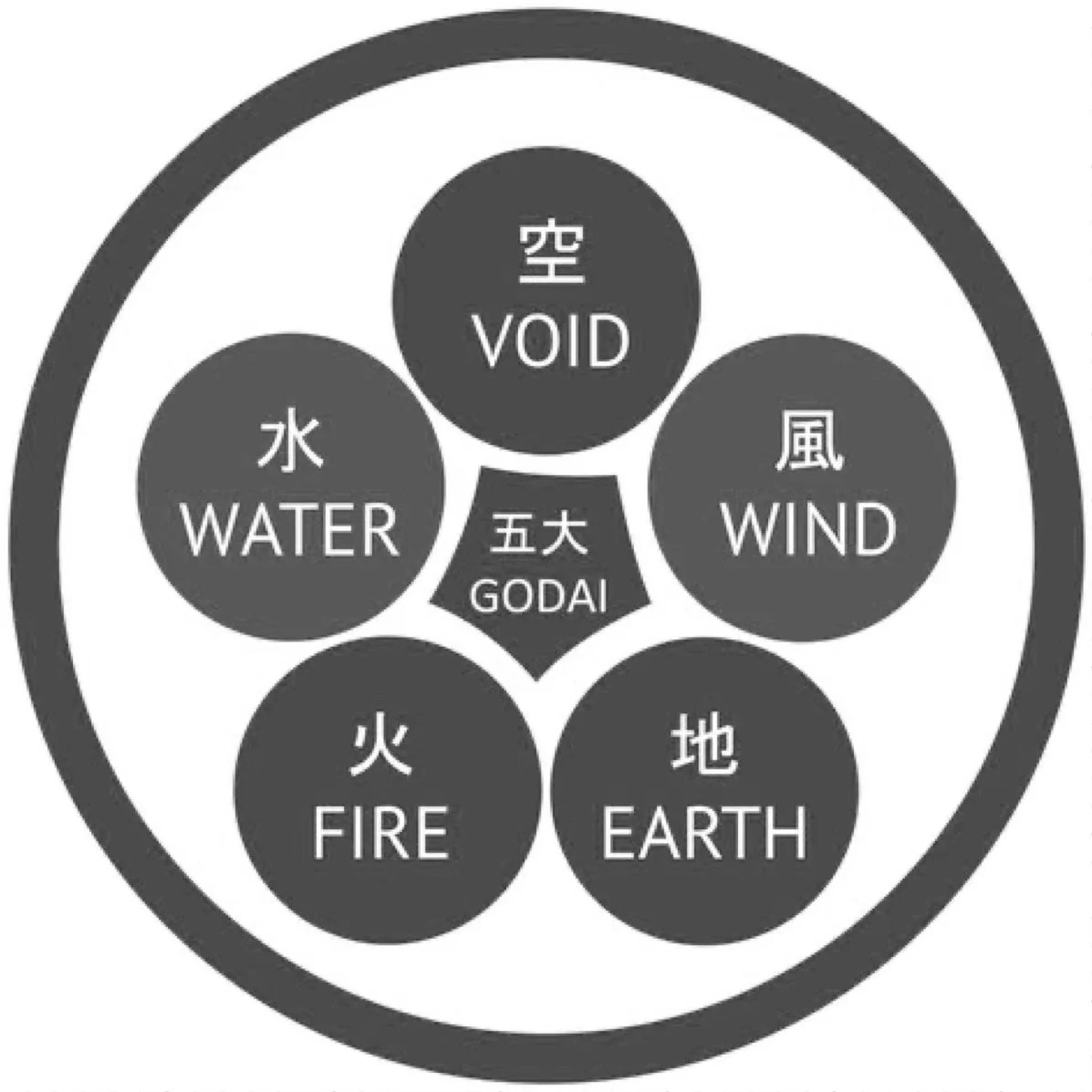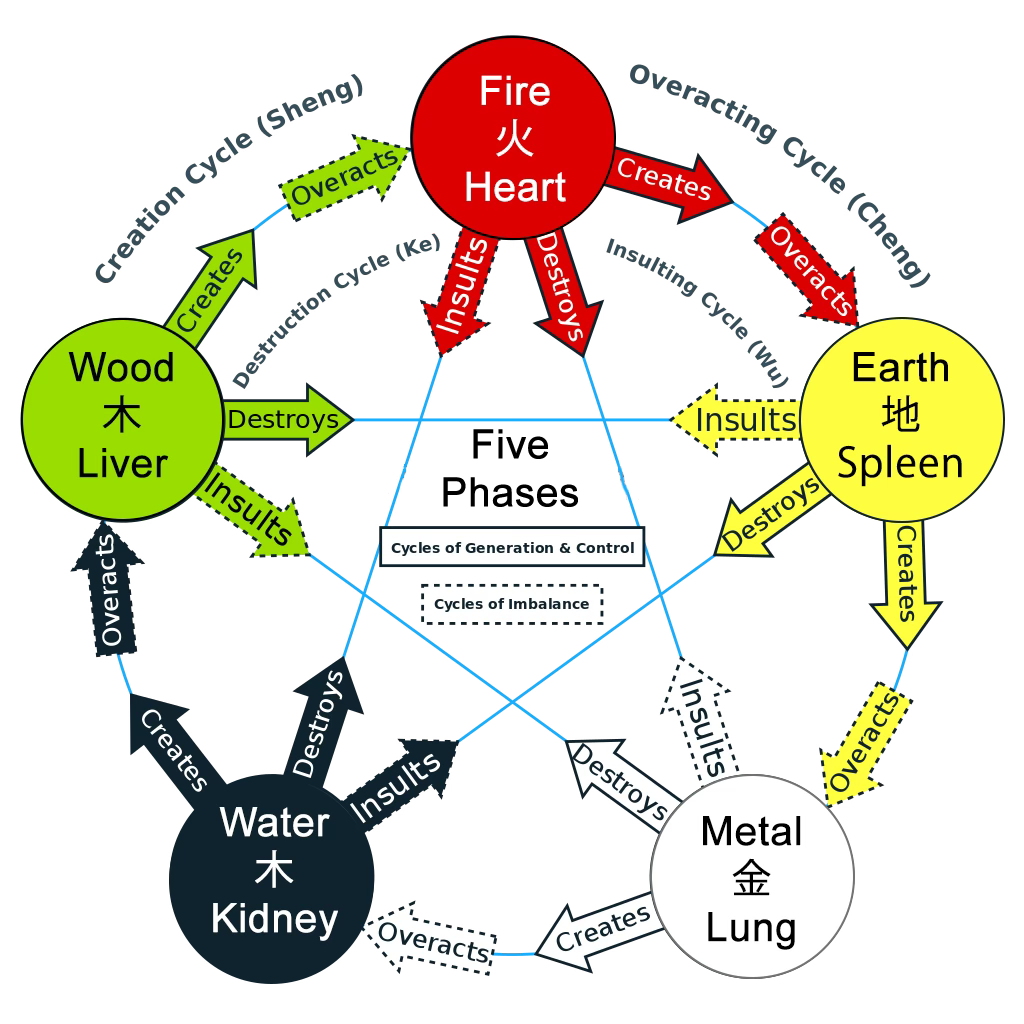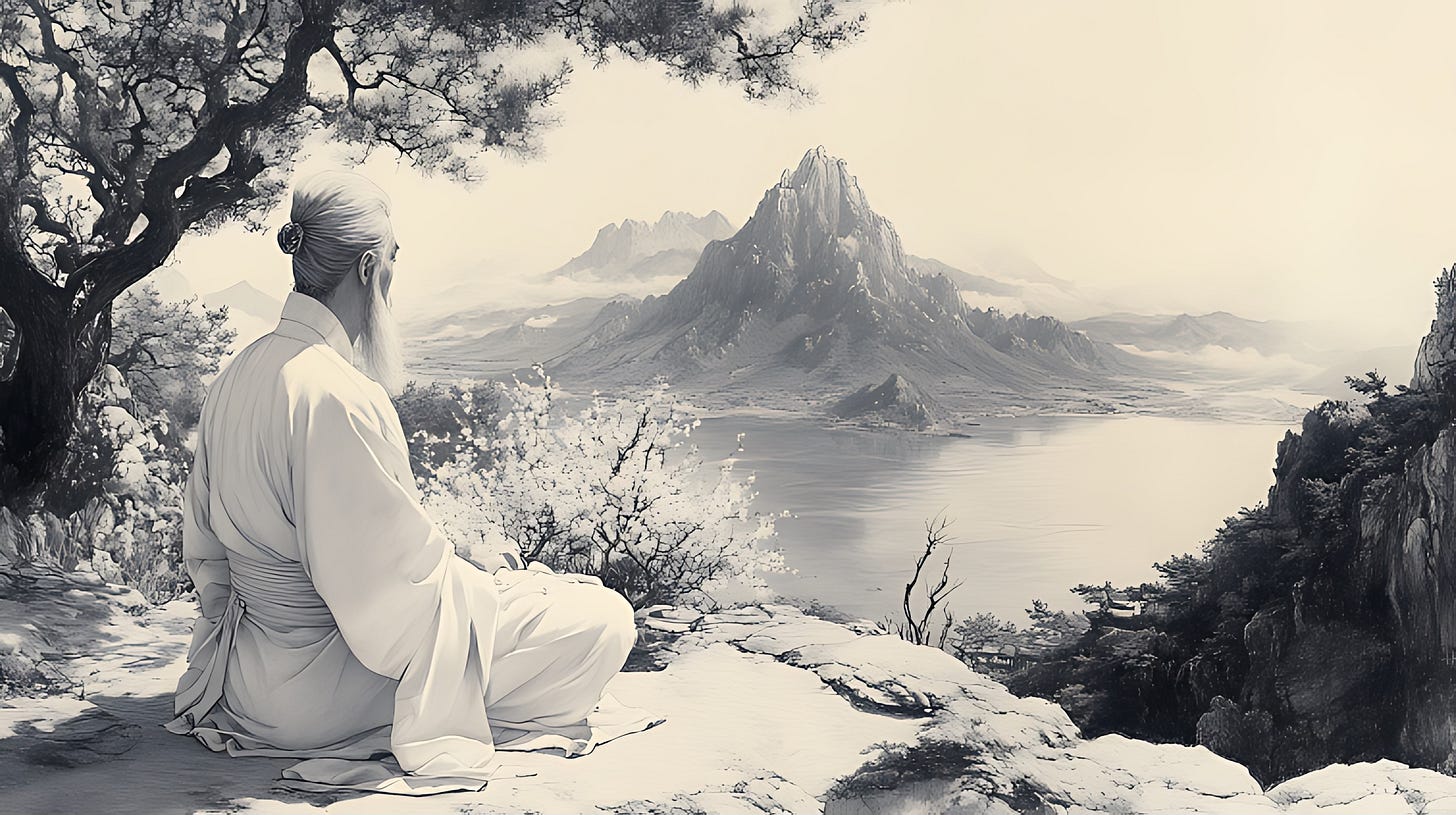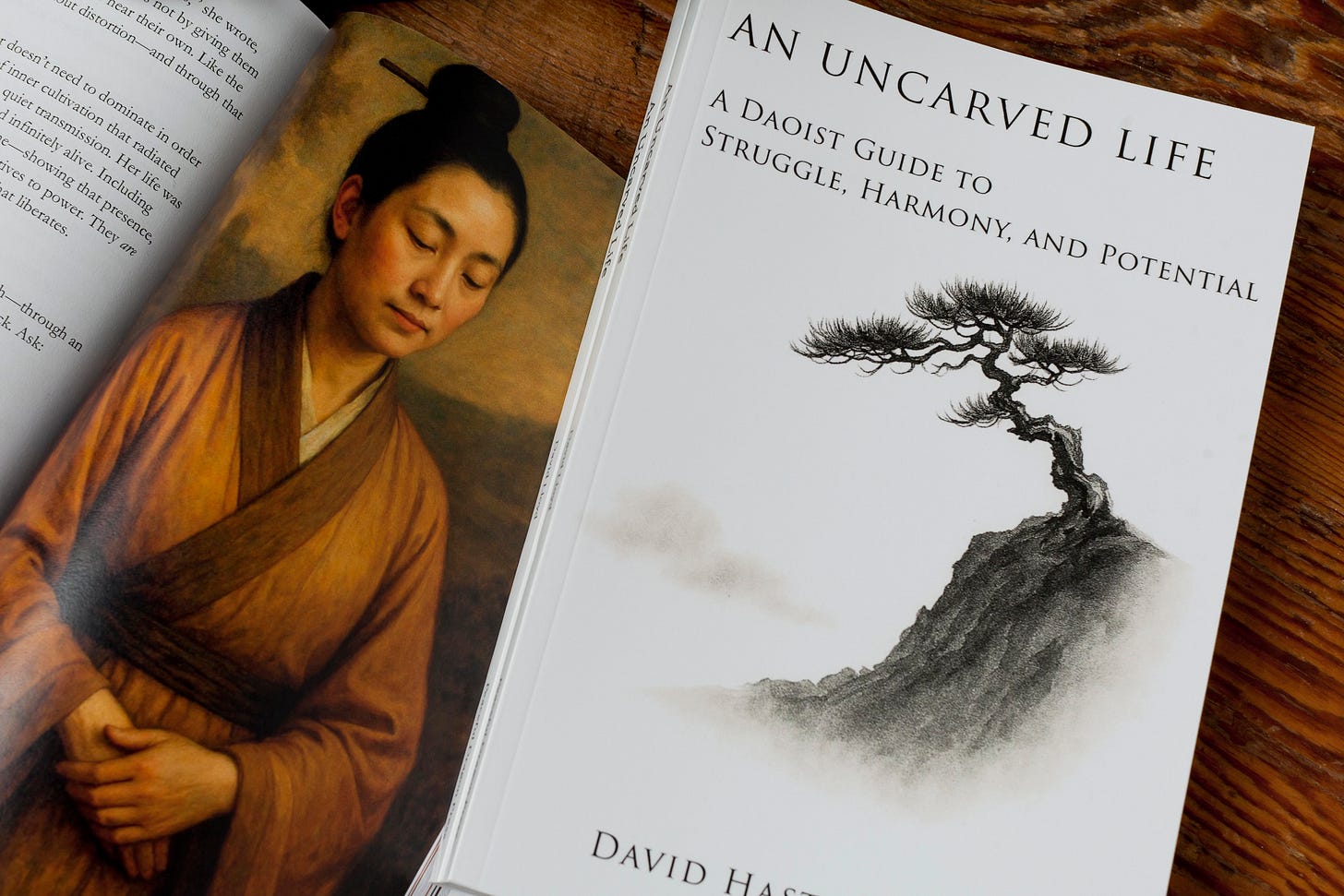GoDai and Wu Xing: A Comparative Exploration of Japanese and Chinese Elemental Philosophy
Two Systems of Five
Across East Asia, the number five holds deep symbolic importance. In both Japan and China, elemental systems emerged to describe the structure of reality, human experience, and the natural world. Yet, while both cultures developed models centered on five principles, the Japanese GoDai (五大, “Five Greats”) and the Chinese Wu Xing (五行, “Five Phases”) are not interchangeable.
The GoDai arose from the fusion of Buddhist, Daoist, and indigenous Japanese thought. It frames the cosmos through Earth (Chi), Water (Sui), Fire (Ka), Wind (Fū), and Void (Kū), with a strong emphasis on spiritual awareness and Buddhist concepts of emptiness.
The Wu Xing, in contrast, developed within classical Chinese philosophy as a theory of processes: Wood (Mu), Fire (Huo), Earth (Tu), Metal (Jin), and Water (Shui). Rather than static substances, they represent cyclical transformations and interrelations across nature, medicine, politics, and culture.
Comparing these two fivefold systems reveals the distinct ways Japan and China approached the question of balance, change, and the meaning of existence.
The GoDai: Five Greats in Japanese Thought
The GoDai’s foundation lies in Indian Buddhist cosmology, particularly the Mahābhūta doctrine of five great elements (earth, water, fire, air, and space). As Buddhism entered Japan via China and Korea in the 6th century, these ideas were reshaped by Japanese esoteric traditions, especially Shingon Buddhism founded by Kūkai (774–835).
Kūkai taught that the universe and the human body were expressions of the same elemental principles. His writings describe Kū (Void) as the essence of potentiality and creativity—reflecting the Mahayana Buddhist doctrine of śūnyatā(emptiness) (Hakeda, 1972).
The GoDai is not merely a cosmological framework but a spiritual map. Each element expresses a dimension of existence:
Chi (Earth): Stability and form.
Sui (Water): Adaptability and flow.
Ka (Fire): Energy and transformation.
Fū (Wind): Movement and knowledge.
Kū (Void): Emptiness, creativity, and the unseen.
These elements appear in Buddhist ritual (such as the five-tiered gorintō stupa), in martial arts strategies (famously in Miyamoto Musashi’s Book of Five Rings), and in Japanese aesthetics that balance form and emptiness.
The Wu Xing: Five Phases in Chinese Philosophy
The Wu Xing, or “Five Phases,” originated in China during the Warring States period (475–221 BCE) and became a cornerstone of Han dynasty thought. Unlike the GoDai, the Wu Xing are not “elements” in the sense of substances but dynamic processes or movements.
The five phases are:
Wood (Mu): Growth, flexibility, and expansion.
Fire (Huo): Heat, intensity, and transformation.
Earth (Tu): Stability, nourishment, and centrality.
Metal (Jin): Structure, contraction, and refinement.
Water (Shui): Depth, adaptability, and storage.
Texts like the Huainanzi and the Lüshi Chunqiu describe the Wu Xing as cosmological cycles, used to explain natural phenomena, dynastic change, and even musical theory. In Chinese medicine, the Wu Xing form the backbone of diagnosis and treatment, linking organs, emotions, and seasonal cycles (Unschuld, 1985).
Two key cycles define their interactions:
The generating cycle (sheng cycle): e.g., Wood feeds Fire, Fire creates Earth (ash), Earth bears Metal, Metal enriches Water, Water nourishes Wood.
The controlling cycle (ke cycle): e.g., Wood penetrates Earth, Earth dams Water, Water extinguishes Fire, Fire melts Metal, Metal chops Wood.
Thus, the Wu Xing expresses the dynamic balance of growth and regulation, making it a systemic model for change.
Comparing the Two Systems
1. Ontology vs. Process
The GoDai describes ontological archetypes—the elemental building blocks of reality and mind. Each element carries both a physical and spiritual symbolism. The inclusion of Void (Kū) highlights the Buddhist emphasis on emptiness as the source of form and meaning.
The Wu Xing, by contrast, describes cyclical processes, not substances. They are less about what the world is made of and more about how the world changes.
2. Religious vs. Practical Applications
The GoDai is most prominent in Buddhism, martial arts, and aesthetics. It is used in ritual, meditation, and philosophy to cultivate awareness of one’s place within the cosmic order.
The Wu Xing has been applied to a wide range of practical fields: medicine, astrology, politics, agriculture, and military theory. It provided an explanatory framework for how different systems interact and transform.
3. The Unique Role of Void and Metal
The GoDai’s distinctive feature is Void (Kū), which transcends materiality. It points to the formless, the ineffable, and the spiritual dimension of existence.
The Wu Xing instead includes Metal (Jin), symbolizing structure, clarity, and refinement. Metal grounds the system in the tangible, worldly sphere of transformation, reflecting the Chinese focus on balance in practical, observable processes.
4. Worldview and Cultural Emphasis
Japanese GoDai: Reflects the Buddhist worldview—impermanence, emptiness, and the cultivation of harmony with unseen forces.
Chinese Wu Xing: Reflects the Chinese worldview—dynamic balance, systemic relationships, and the cycles of nature and society.
Examples in Practice
GoDai in Martial Arts: Miyamoto Musashi’s Go Rin no Sho uses the five elements as metaphors for combat strategy—Earth as grounding, Water as adaptability, Fire as aggression, Wind as understanding others’ strategies, and Void as transcendent mastery (Musashi, 1645/1974).
Wu Xing in Medicine: In the Huangdi Neijing (Yellow Emperor’s Inner Canon), the five phases correspond to the organs: Liver (Wood), Heart (Fire), Spleen (Earth), Lung (Metal), Kidney (Water). Imbalances between them explain illness, and treatments restore dynamic equilibrium (Unschuld, 1985).
These examples highlight how the two systems served different needs: GoDai as a guide to spiritual and martial cultivation, Wu Xing as a tool for governance, medicine, and practical harmony.
Two Paths, One Vision of Balance
Though both are fivefold elemental systems, the GoDai and Wu Xing serve different purposes. The GoDai articulates the ontological and spiritual essence of existence, emphasizing harmony between form and emptiness. The Wu Xing articulates the dynamic processes of transformation, emphasizing balance in cycles of nature and society.
Together, they reveal the breadth of East Asian thought: one system reaching toward transcendence, the other grounding itself in observable processes. To study them side by side is to glimpse two complementary visions of how humans can live in harmony with the cosmos—whether through spiritual awareness or through dynamic balance.
Like what you read? Keep exploring…
If this post resonated with you, you’ll love my book:
An Uncarved Life: A Daoist Guide to Struggle, Harmony, and Potential
This book blends timeless Daoist wisdom with real-world insight into how we can navigate struggle, cultivate inner peace, and live in alignment with our deeper potential. Drawing from classical texts like the Dao De Jing and integrating modern psychology and neuroscience, An Uncarved Life offers a grounded, poetic, and deeply personal guide to living well in a chaotic world.
Whether you’re seeking clarity, calm, or a more meaningful path forward, this book is a companion for anyone who wants to walk the Way with sincerity and strength.
Available now in print, Kindle, and audiobook formats.
Click here to get your copy on Amazon
References
Hakeda, Y. (Trans.). (1972). Kūkai: Major Works. Columbia University Press.
Musashi, M. (1645/1974). The Book of Five Rings (T. Cleary, Trans.). Shambhala.
Unschuld, P. U. (1985). Medicine in China: A History of Ideas. University of California Press.
Major, J. S., Queen, S. A., Meyer, A. S., & Roth, H. D. (2010). The Huainanzi: A Guide to the Theory and Practice of Government in Early Han China. Columbia University Press.






